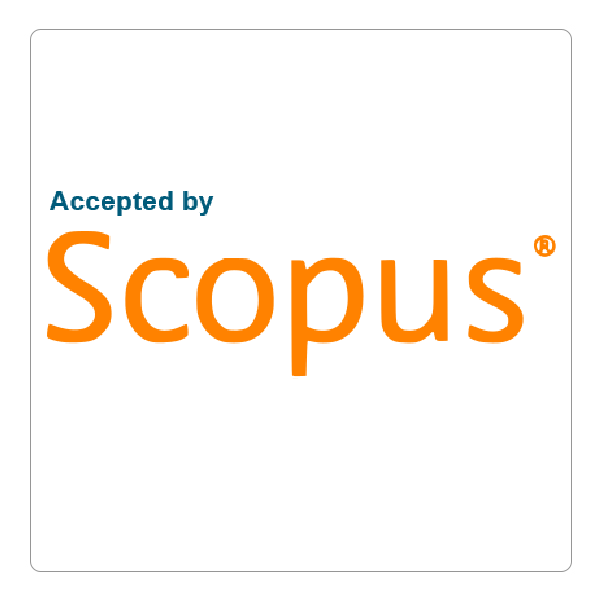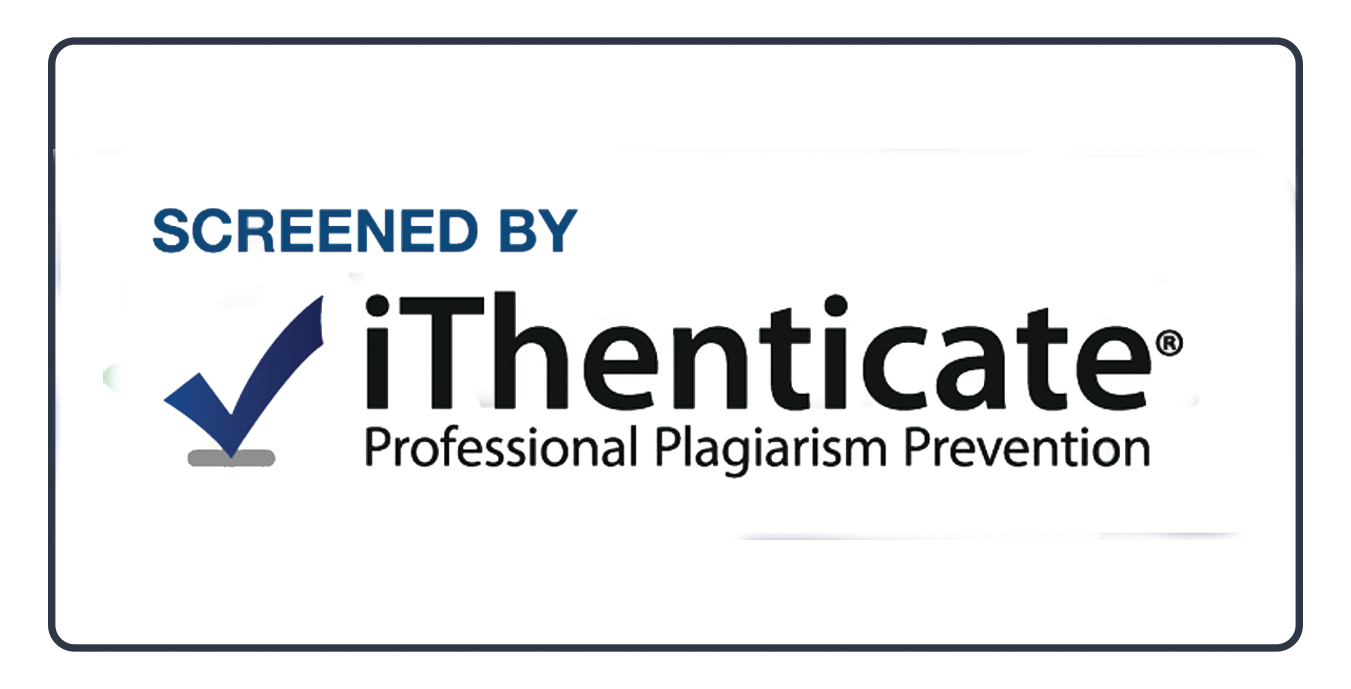How to Cite This Article
Qadir, Sirwa Anwar; Fathulla, Chnar Najmaddin; and Amin, Shireen Abdulkerim
(2024)
"Influence of Zinc Oxide Nano Spray on the Growth and Development of Bryophyllum pinnatum,"
Polytechnic Journal: Vol. 13:
Iss.
1, Article 23.
DOI: https://doi.org/10.59341/2707-7799.1836
Document Type
Original Article
Abstract
"Background and objectives: Zinc oxide (ZnO) is one of the best applied nanoscale technologies in agriculture. It showed both positive and negative effects on plant growth. The current study aimed to evaluate the effect of ZnO NPs positive or negative effect as a foliar fertilizer on the growth and development of Brophyllum pinnatum seedlings and which concentration play a crucial role in its positivity Methods: The study was conducted as completely randomized design to detect the effect of three levels of green ZnO NPs foliar spray; 0.20, 0.40 and 0.60 ppm as compared to control on some physiological anatomical characters of Brophyllum pinnatum seedlings. Results: The results had obtained showed that maximum stem height 32.33 and 44.00 cm due to 0.60 ppm after first and second sprays over control. The same level led to a significant increase in leaf area, shoot dry weight (SDW), root dry weight (RDW), total seedling dry weight (TDW) and root: shoot (R:S) ratio; 58.67 cm2, 1.60 g, 0.44 g and 2.09 g and 3.79 respectively. The highest chlorophyll a, b and total recorded duo to 0.40 ppm; 0.72, 0.04 and 0.76 mg g-1 of fresh leaves respectively. The transverse sections prepared by paraffin methods shows the anatomy of plant parts such as stem, petiole and leaf effect with treated by ZnO NPs; through two Periods (30 days, and 60 days). 0.40 and 0.60 ppm represent the best promoter of the physiological behavior and anatomical characters; midrib, petiole, lamina and stem anatomy. Conclusions: It could be concluded that foliar application with green ZnO NPs behaved as a growth promoter for Brophyllum pinnatum. 0.40 and 0.60 ppm represent the best concentration to enhance best performance in the plant body that affect the physiological behavior and anatomical characters "
References
Ali A, Phull AR, Zia M. Elemental zinc to zinc nanoparticles: Is ZnO NPs crucial for life? Synthesis, toxicological, and environmental concerns. Nanotechnology Reviews. 2018 Oct 25;7(5):413-41. https://doi.org/10.1515/ntrev-2018-0067
BAĞCI SA, Ekiz H, Yilmaz A. Determination of the salt tolerance of some barley genotypes and the characteristics affecting tolerance. Turkish Journal of Agriculture and Forestry. 2003;27(5):253-60. https://journals.tubitak.gov.tr/agriculture/vol27/iss5/1/#: ~:text=DOI-,%2D
Bradfield SJ, Kumar P, White JC, Ebbs SD. Zinc, copper, or cerium accumulation from metal oxide nanoparticles or ions in sweet potato: yield effects and projected dietary intake from consumption. Plant Physiology and Biochemistry. 2017 Jan 1; 110:128-37. https://doi.org/10.1016/j.plaphy.2016.04.008
Cousins AB, Baroli I, Badger MR, Ivakov A, Lea PJ, Leegood RC, von Caemmerer S. The role of phospho enol pyruvate carboxylase during C4 photosynthetic isotope exchange and stomatal conductance. Plant Physiology. 2007 Nov 1;145(3):1006-17.https://doi.org/10.1104%2Fpp.107.103390
Elmer WH, White JC. The use of metallic oxide nanoparticles to enhance growth of tomatoes and eggplants in disease infested soil or soilless medium. Environmental Science: Nano. 2016;3(5):1072-9. https://doi.org/10.1039/D2EN00762B.
Faizan M, Faraz A, Mir AR, Hayat S. Role of zinc oxide nanoparticles in countering negative effects generated by cadmium in Lycopersicon esculentum. Journal of Plant Growth Regulation. 2021 Feb; 40:101-15. https://doi.org/10.1007/s00344-019-10059-2
Faizan M, Faraz A, Yusuf M, Khan ST, Hayat S. Zinc oxide nanoparticle-mediated changes in photosynthetic efficiency and antioxidant system of tomato plants. Photosynthetica. 2018 Jun; 56:678-86. https://doi.org/10.1007/s11099-017-0717-0
Fathulla CN, Qadir SA, Abdulkerim S. Bryophyllum pinnatum Growth Response to Nickle Nanoparticles Foliar Spray. Al-Qadisiyah Journal For Agriculture Science. 2023 Dec. 13; 2: 97- 104. https://doi: 10.33794/qjas.2023.143346.1142.
Fürer K, Simões-Wüst AP, von Mandach U, Hamburger M, Potterat O. Bryophyllum pinnatum and related species used in anthroposophic medicine: constituents, pharmacological activities, and clinical efficacy. Planta medica. 2016 Jul;82(11/12):930-41. http://doi.org/ 10.1055/s-0042-106727
García-López JI, Niño-Medina G, Olivares-Sáenz E, LiraSaldivar RH, Barriga-Castro ED, Vázquez-Alvarado R, Rodríguez-Salinas PA, Zavala-García F. Foliar application of zinc oxide nanoparticles and zinc sulfate boosts the content of bioactive compounds in habanero C C Figure 5. TS stem of Bryophyllum pinnatum. A. control, B. treated with ZnO NPs (0.60 ppm; after 30 days), C. treated with ZnO NPs (0.60 ppm; after 60 days), C: cortex, F: fiber. A, B, C=4X. 248 peppers. Plants. 2019 Jul 30;8(8):254. https://doi.org/10.3390/plants8080254
Ghosh M, Jana A, Sinha S, Jothiramajayam M, Nag A, Chakraborty A, Mukherjee A, Mukherjee A. Effects of ZnO nanoparticles in plants: cytotoxicity, genotoxicity, deregulation of antioxidant defenses, and cell-cycle arrest. Mutation Research/Genetic Toxicology and Environmental Mutagenesis. 2016 Sep 1; 807:25-32. https://doi.org/10.1016/j.mrgentox.2016.07.006
Giraldo JP, Landry MP, Faltermeier SM, McNicholas TP, Iverson NM, Boghossian AA, Reuel NF, Hilmer AJ, Sen F, Brew JA, Strano MS. Plant nanobionics approach to augment photosynthesis and biochemical sensing. Nature materials. 2014 Apr;13(4):400-8. https://doi.org/10.1038/nmat3890
Hassan MU, Nawaz M, Mahmood A, Shah AA, Shah AN, Muhammad F, Batool M, Rasheed A, Jaremko M, Abdelsalam NR, Hasan ME. The role of zinc to mitigate heavy metals toxicity in crops. Frontiers in Environmental Science. 2022:1712. https://doi.org/10.3389/fenvs.2022.990223
Holder CD. Leaf water repellency of species in Guatemala and Colorado (USA) and its significance to forest hydrology studies. Journal of Hydrology. 2007 Mar 30;336(1-2):147-54. https://doi.org/10.1016/j.jhydrol.2006.12.018 https://doi.org/10.1007/s40003-012-0049-z
Javed R, Usman M, Yücesan B, Zia M, Gürel E. Effect of zinc oxide (ZnO) nanoparticles on physiology and steviol glycosides production in micropropagated shoots of Stevia rebaudiana Bertoni. Plant Physiology and Biochemistry. 2017 Jan 1; 110:94-9. https://doi.org/10.1016/j.plaphy.2016.05.032
Lans CA. Ethnomedicines used in Trinidad and Tobago for urinary problems and diabetes mellitus. Journal of ethnobiology and ethnomedicine. 2006 Dec; 2:1-1. http://doi.org/ 10.1186/1746-4269-2-45
Milewska-Hendel A, Zubko M, Stróż D, Kurczyńska EU. Effect of nanoparticles surface charge on the Arabidopsis thaliana (L.) roots development and their movement into the root cells and protoplasts. International journal of molecular sciences. 2019 Apr 3;20(7):1650. https://doi.org/10.3390/ijms20071650
Mohajjel Shoja H, Ahmadi L, Kolahi M, Mohajel Kazemi E. Effect of TiO 2 NPs on the growth, anatomic features and biochemistry parameters of Baby sun rose (Apteniacordifolia). Physiology and Molecular Biology of Plants. 2021 Sep; 27:2071-81. https://doi.org/10.1007/s12298- 021-01050-x
Mohammadi C, Mahmud S, Abdullah SM, Mirzaei Y. Green synthesis of ZnO nanoparticles using the aqueous extract of Euphorbia petiolata and study of its stability and antibacterial properties. Moroccan Journal of Chemistry. 2017 Jul 19;5(3):5-3. https://doi.org/10.48317/IMIST.PRSM/morjchemv5i3.8974
Peng C, Tong H, Shen C, Sun L, Yuan P, He M, Shi J. Bioavailability and translocation of metal oxide nanoparticles in the soil-rice plant system. Science of the Total Environment. 2020 Apr 15; 713:136662. https://doi.org/10.1016/j.scitotenv.2020.136662
Pérez Velasco EA, Betancourt Galindo R, Valdez Aguilar LA, González Fuentes JA, Puente Urbina BA, Lozano Morales SA, Sánchez Valdés S. Effects of the morphology, surface modification and application methods of ZnO-NPs on the growth and biomass of tomato plants. Molecules. 2020 Mar 12;25(6):1282. https://doi.org/10.3390/molecules25061282
Prasad TN, Sudhakar P, Sreenivasulu Y, Latha P, Munaswamy V, Reddy KR, Sreeprasad TS, Sajanlal PR, Pradeep T. Effect of nanoscale zinc oxide particles on the germination, growth and yield of peanut. Journal of plant nutrition. 2012 Apr 1;35(6):905-27. https://doi.org/10.1080/01904167.2012.663443
Pullagurala VL, Adisa IO, Rawat S, Kalagara S, Hernandez-Viezcas JA, Peralta-Videa JR, GardeaTorresdey JL. ZnO nanoparticles increase photosynthetic pigments and decrease lipid peroxidation in soil grown cilantro (Coriandrum sativum). Plant physiology and biochemistry. 2018 Nov 1; 132:120-7. https://doi.org/10.1016/j.plaphy.2018.08.037
Qadir SA, Khursheed MQ, Rashid TS, Awla HK. Abscisic acid accumulation and physiological indices in responses to drought stress in wheat genotypes. The Iraqi Journal of Agricultural Science. 2019;50(2):705-12. https://doi.org/10.36103/ijas.v2i50.670
Radi AA, Farghaly FA, Al-Kahtany FA, Hamada AM. Zinc oxide nanoparticles-mediated changes in ultrastructure and macromolecules of pomegranate callus cells. Plant Cell, Tissue and Organ Culture (PCTOC). 2018 Nov; 135:247-61. https://doi.org/10.1007/s11240- 018-1460-3
Rajput VD, Minkina T, Sushkova S, Mandzhieva S, 249 Fedorenko A, Lysenko V, Bederska-Błaszczyk M, Olchowik J, Tsitsuashvili V, Chaplygin V. Structural and ultrastructural changes in nanoparticle exposed plants. Nanoscience for sustainable agriculture. 2019:281-95. https://doi.org/10.1007/978-3-319-97852-9_13
Raliya R, Tarafdar JC. ZnO nanoparticle biosynthesis and its effect on phosphorous-mobilizing enzyme secretion and gum contents in Clusterbean (Cyamopsis tetragonoloba L.). Agricultural Research. 2013 Mar; 2:48-57.
Rastogi A, Zivcak M, Sytar O, Kalaji HM, He X, Mbarki S, Brestic M. Impact of metal and metal oxide nanoparticles on plant: a critical review. Frontiers in chemistry. 2017 Oct 12; 5:78. https://doi.org/10.3389/fchem.2017.00078
Simpson MG. Plant anatomy and physiology. Plant Systematics. 2019; 537:566. http://dx.doi.org/10.1016/B978-0-12-812628-8.50010-9
Statistics IS. IBM Corp. Released 2013. IBM SPSS Statistics for Windows, Version 22.0. Armonk, NY: IBM Corp. Google Search. 2013. https://scholar.google.com/scholar?cluster=1315276272 9471798258&hl=en&as_sdt=2005&sciodt=0,5
Tirani MM, Haghjou MM, Ismaili A. Hydroponic grown tobacco plants respond to zinc oxide nanoparticles and bulk exposures by morphological, physiological and anatomical adjustments. Functional Plant Biology. 2019 Feb 8;46(4):360-75. https://doi.org/10.1071/FP18076
Wan J, Wang R, Wang R, Ju Q, Wang Y, Xu J. Comparative physiological and transcriptomic analyses reveal the toxic effects of ZnO nanoparticles on plant growth. Environmental science & technology. 2019 Mar 14;53(8):4235-44. https://doi.org/10.1021/acs.est.8b06641
Wang X, Yang X, Chen S, Li Q, Wang W, Hou C, Gao X, Wang L, Wang S. Zinc oxide nanoparticles affect biomass accumulation and photosynthesis in Arabidopsis. Frontiers in plant science. 2016 Jan 12; 6:1243. https://doi.org/10.3389/fpls.2015.01243
Wintermans JF, De Mots A. Spectrophotometric characteristics of chlorophylls a and b and their phenophytins in ethanol. Biochimica et Biophysica Acta (BBA)-Biophysics including Photosynthesis. 1965 Nov 29;109(2):448-53. https://doi.org/10.1016/0926- 6585(65)90170-6
Yusefi-Tanha E, Fallah S, Rostamnejadi A, Pokhrel LR. Zinc oxide nanoparticles (ZnONPs) as a novel nanofertilizer: Influence on seed yield and antioxidant defense system in soil grown soybean (Glycine max cv. Kowsar). Science of the Total Environment. 2020 Oct 10; 738:140240. https://doi.org/10.1016/j.scitotenv.2020.140240
Zhang R, Zhang H, Tu C, Hu X, Li L, Luo Y, Christie P. Phytotoxicity of ZnO nanoparticles and the released Zn (II) ion to corn (Zea mays L.) and cucumber (Cucumis sativus L.) during germination. Environmental Science and Pollution Research. 2015 Jul; 22:11109-17. https://doi.org/10.1007/s11356-015-4325-x
Zoufan P, Baroonian M, Zargar B. ZnO nanoparticlesinduced oxidative stress in Chenopodium murale L, Zn uptake, and accumulation under hydroponic culture. Environmental Science and Pollution Research. 2020 Apr; 27:11066-78. https://doi.org/10.1007/s11356-020-07735- 2











Follow us: